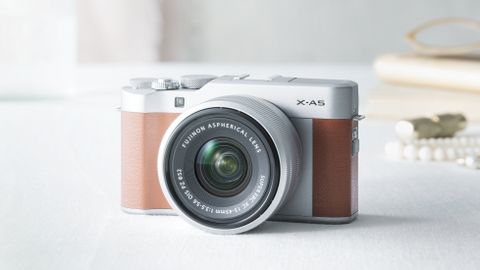Why you can trust TechRadar
Performance
- Average autofocus performance
- Great focus accuracy and image stabilization
- Excellent image quality
The Fujifilm X-A5 does have an advanced on-sensor phase-detection autofocus system which should deliver faster, better autofocus than the contrast-based systems on older cameras, but a lot will depend on the AF tech in the lens you're using – how fast its AF motors are, basically. Swapping the 15-45mm kit lens over to an old X-A1 revealed that the new camera does feel a fraction faster, but there isn’t a whole lot in it. The X-A5 is fairly snappy, but it's not the fastest-focusing mirrorless camera we’ve tried.
What it does offer is an AF mode for practically every situation. You can set it to Wide/Tracking mode if you’re happy to let the camera decide what to focus on, Zone AF where you know roughly which area your subject is in, or Single Point AF when you want complete control over the focus point. In the Zone and Single Point modes you can choose not only where to focus, but change the size of the focus zone/point with the rear control wheel. The eye-detection AF mode is especially good if you’re photographing people, since it’s always the eyes that need to be sharp in successful portrait shots.
The operation of the new power-zoom kit lens is a mixed bag. It produces great image quality, but the electrically-operated zoom feels a little unresponsive. Sometimes it failed to react to our first attempt at an adjustment for no obvious reason, and with no external markings it’s the devil of a job remembering which way to turn it to zoom and out.
Between them, though, the X-A5’s autofocus and the lens’s image stabilization deliver a really high hit rate of sharp shots. If you leave the camera set to auto ISO, you can effectively forget about the lighting conditions and just keep shooting; the high ISO performance is good enough that you rarely need to worry about the image quality.
Image quality
- Images are sharp and rich in color
- Regular P mode does a great job in a variety of conditions
- Advanced Filter modes are a bit of a damp squib
Indeed, image quality is where this camera excels. It may not have Fujifilm’s top X-Trans sensor technology, but the regular 24.2MP CMOS sensor in the X-A5 still does a great job. Images are sharp, rich in color and well exposed. You can get great results without having too get embroiled in the technicalities, but more experienced photographers can still dig in and take manual control to pretty much the same degree as with more upmarket enthusiast cameras.
Do you need the scene modes? Probably not, since the regular P mode does a great job in a wide variety of conditions, and you get a little more control over the settings.

Click here to see the full-size image

Click here to see the full-size image

Click here to see the full-size image

Click here to see the full-size image

Click here to see the full-size image

Click here to see the full-size image
Likewise the Advanced Filter modes, which, although they look interesting are a bit of a damp squib. The Partial Color filters give interesting results in black and white, and the Miniature Filter can work well if you can find the right kind of angled overhead view on your subject, but the Toy Camera filter is very heavy-handed and the HDR filter is actually pretty poor. If you want to experiment with special effects and retro looks you’re better off using a smartphone app, or shooting regular images on the X-A5 and editing them later on a computer.
That’s a pretty minor complaint, though, and while the X-A5’s autofocus and general responsiveness is about average for a mirrorless camera in this class, its image quality and the proportion of sharp, well-exposed shots it can capture are well above the norm.
Current page: Performance and image quality
Prev Page Build and handing Next Page Verdict and competition
How to watch Liège-Bastogne-Liège 2024: live stream men's cycling online from anywhere

A key Apple app is rumored to be getting a major upgrade in macOS 15

Intel's formidable 288 core CPU now has a proper family name — Granite Rapids and Sierra Forest are Xeon 6 processors but is it just becoming too confusing?
